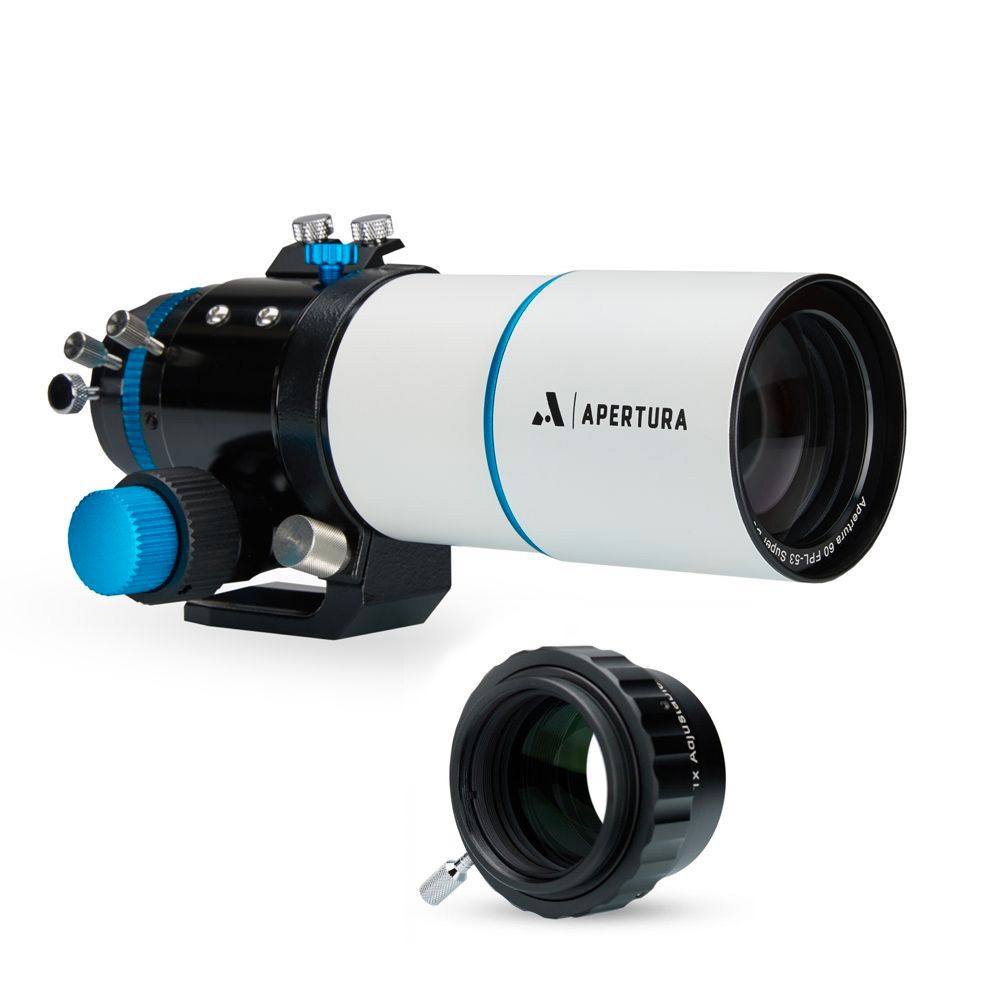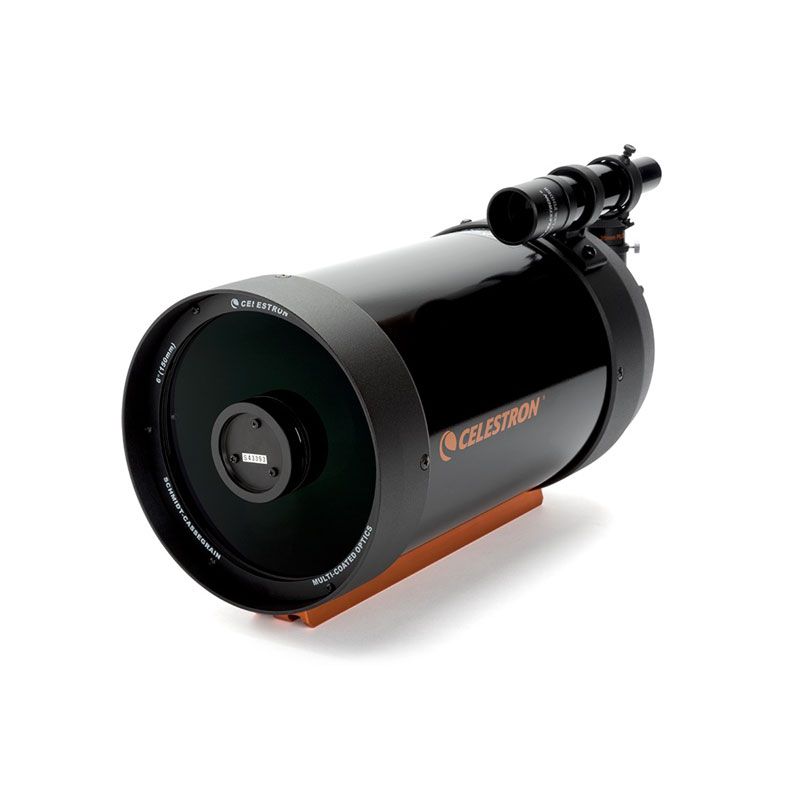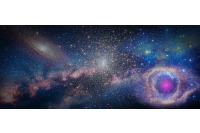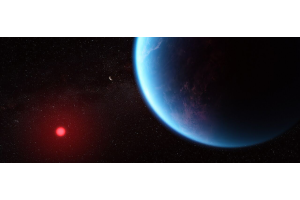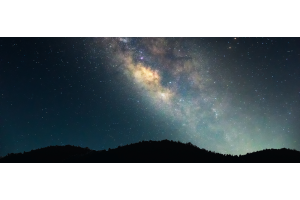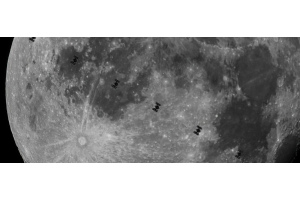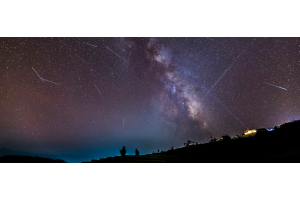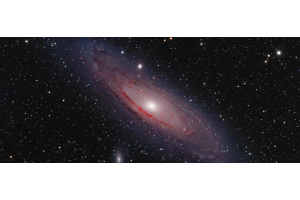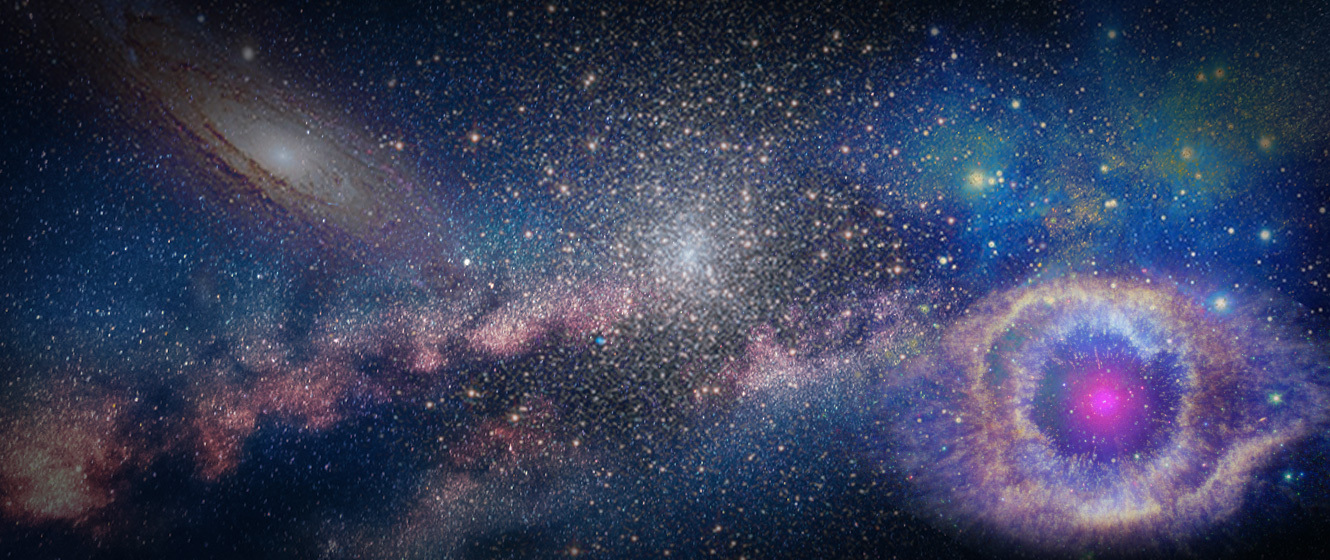
There’s nothing quite like a telescope to bring the universe into your own backyard. However, with thousands of objects within reach, it can be difficult to know where to start, especially when you’re still relatively new to the hobby. To help you get started, we’ve found the ten best objects you can easily find and enjoy in the night sky during different times of the year.
What Are the Different Types of Telescope?
Before you dive in, it’s a good idea to familiarize yourself with some telescope basics. For starters, let’s talk about the types of telescopes available and which mount is best for a beginner.
In essence, there are two types of telescopes: refractors and reflectors. A refractor is probably what most people imagine when they think of a telescope. It has a long tube with a lens at one end and an eyepiece at the other. Refractors are limited in size, as the larger the lens, the longer the tube that’s required for the optimum image quality.
Reflectors solve this problem by using mirrors instead of lenses. Light enters the telescope through the open end and then hits the primary mirror at the bottom. The light is reflected back up the tube and hits a smaller, secondary mirror, which then bounces the light out of the tube via the eyepiece.
This configuration effectively cuts the required length of the tube in half. As a result, the mirror can be much larger without the need for a correspondingly long tube.
A third type of telescope has risen in popularity over the past few decades. Catadioptric scopes are a hybrid of refractors and reflectors. They use a lens, like a refractor, to capture the light, which then travels down the tube to a primary mirror. The light is reflected back up the tube to a smaller, secondary mirror and then reflected back to the bottom, where it exits through the eyepiece.
Which type you choose is really a matter of preference; refractors produce sharper images but are restricted by their size. Reflectors can be produced in larger sizes, but their mirrors need to be re-aligned from time to time. Catadioptrics represent the best of both worlds but can be more expensive than the others.
There are also two main mount types for a telescope. The mount attaches the telescope to the tripod or base and is used to move the telescope.
An alt-azimuth mount is the most basic as it moves the telescope in a simple horizontal and vertical motion. With an alt-azimuth mount, it’s very easy to point the telescope toward your target.
Alt-azimuth telescopes were traditionally always attached to a standard tripod base, but more recently, the Dobsonian mount has grown in popularity. These mounts are also alt-azimuth, but were specifically designed for large reflectors. The telescope sits on a box-like mount that turns to allow the scope to move horizontally, while also allowing it to swivel vertically.
The other main type of mount is more complicated. To put it simply, the equatorial mount angles the telescope so that it can easily track the target as it rises and sets. Whereas an alt-azimuth scope must be gradually moved horizontally and vertically to keep the object in view, with an equatorial mount you only need to make a horizontal adjustment.
The downside? Equatorial mounts can be tricky for beginners to set up and use as they also require the use of counterweights. (Incidentally, since Dobsonian telescopes sit on an alt-azimuth mount, there are no equatorial Dobsonians available.)
There are a few other things you’ll need to know when considering which telescope to buy. For starters, you’ll need to know its aperture. This is the diameter of either the lens (on a refractor) or the mirror (on a reflector) and when it comes to telescopes, bigger is definitely better.
The larger the aperture, the more light your telescope will be able to gather. The more light it can gather, the fainter the object it can detect, and the greater the detail you’ll see. For example, larger apertures will be able to show details on the planets and in galaxies that you simply won’t be able to see with smaller scopes.
In this respect, a reflector has the advantage over a refractor because the refractor design limits the size of the lens you can use.
If you’re just getting started, it’s best to stick to something fairly straightforward, such as a refractor or reflector on an alt-azimuth tripod mount or a reflector on a Dobsonian mount.
For example, the Celestron StarSense Explorer LT 80AZ Refractor Telescope with Smartphone Assist is a great option for beginners as it includes Celestron’s innovative StarSense technology that allows you to use your smartphone to guide the telescope to your target.
Alternatively, there’s the Zhumell Z100 Newtonian Reflector Telescope on Portable Alt-Azimuth Mount. It’s small enough and light enough to be taken almost anywhere and with an aperture of 100mm, this is great value for money.
Which Accessories Do You Need?
You’ll also need to know the focal length of the telescope, as measured in millimeters. This is the distance light must travel from entering the telescope to exiting it via the focuser (where the eyepiece is inserted.) Eyepieces also have a focal length, and you’ll need to know both numbers in order to calculate the magnification you’re using, but fortunately, this is easily done.
Simply take the focal length of the telescope and then divide it by the focal length of the eyepiece you’re using. For example, if your telescope has a focal length of 1000mm and you’re using an eyepiece with a focal length of 10mm, you’ll get a magnification of 100x (1000 / 10 = 100). Similarly, use a 20mm eyepiece and you’ll get a magnification of 50x.
Lastly, think about a few essential, inexpensive accessories. Observing the Moon through a telescope can dazzle your eyes and ruin your night vision in the process. A neutral density lunar filter screws onto the bottom of your eyepiece and will cut out the vast majority of the light, making your observations of the Moon a much more comfortable experience.
The Celestron 1.25" Moon Filter is a great inexpensive option that will cut out 82% of the Moon’s light, ensuring you’ll be able to observe the Moon without being blinded.
Another essential accessory is a Barlow lens. This small piece of equipment will increase the magnification of any eyepiece you use with it, thereby doubling your range of available magnifications without spending a penny.
You can typically buy Barlows that will increase your magnification by 2x, 3x, and 5x, with 2x being the most popular. For example, the Celestron Omni Series 1.25" 2x Barlow Lens is a best-seller and is compatible with any telescope that uses 1.25” eyepieces.
Not sure where to start? The Celestron Observer's Accessory Kit is the perfect way to get all the essential accessories you need. It includes two eyepieces with focal lengths of 17mm and 6mm, a 2x Barlow, a lunar filter, two colored filters to enhance planetary details, and a cleaning cloth.
Whichever scope and accessories you choose, there are thousands of objects beyond the Moon and planets to observe, guaranteeing countless hours of enjoyment.
What’s on the list?
While some of the objects are relatively easily found, there are others that might require the help of an app or a star chart. For example, if you’re familiar with the Big Dipper or Orion, you’ll have no problem finding at least two or three of the targets.
What will you see? For starters, there are three multiple stars on the list; these are stars that appear as a single star to the naked eye, but when you turn a telescope toward them, the star is split into two or more components. Castor in Gemini, Mizar & Alcor in Ursa Major, and Albireo in Cygnus are three perfect examples for small telescopes.
There are two nebulae, of two different types. The first, the Orion Nebula, is a diffuse nebula. This, and others like it, is where stars are formed before they drift out into the cosmos.
The second is the Ring Nebula, a planetary nebula. Unlike a diffuse nebula, these nebulae mark the opposite end of a star’s life. As a star dies, it blows off shells of gas and dust that then expand and dissipate into space. They’re called planetary nebulae because they often resemble planets when observed telescopically.
In total, there are four star clusters, again of two different types. The first type are known as open star clusters. These are typically young, hot blue-white stars that formed from a nebula and still lie close to each other in space. There are two open star clusters on our list, the Owl Cluster and Messier 41 (M41), but it’s also worth seeking out two others: the Pleiades and the Beehive cluster.
Both the Pleiades and the Beehive are visible to the naked eye, and while they’re both best observed with binoculars, they can also be enjoyed to a lesser extent at low power through a telescope. The Pleiades can be found in Taurus and is best seen from late autumn to early spring. The Beehive cluster is located in Cancer and is visible from mid-winter to mid-spring.

The other type of star cluster is a globular star cluster. These clusters are spherical in shape and typically contain hundreds of thousands of older stars. There are two globular clusters on the list: Messier 3 (M3) in Canes Venatici and the Keystone Cluster in Hercules.
Not every constellation is visible on every night of the year, with some stars and objects being best seen during specific seasons. With that in mind, we’ll start with the objects you can see in the fall.
The Pleiades Star Cluster in Taurus. Photo Credit: Kyle Denny
Gems Fit for Royalty

The Owl Cluster in the constellation of Cassiopeia. Photo Credit: Dieter Willasch (Astro-Cabinet)

The Andromeda Galaxy in the constellation of Andromeda. Photo Credit: Kyle Denny
There’s a crooked constellation that appears high over the northern horizon during the fall months. Cassiopeia, the Queen, is made up of relatively bright stars and is located on the other side of Polaris, the Pole Star, from the Big Dipper.
At this time of year, it looks like a flattened M hanging over Polaris, while in winter it looks like a misshapen E to that star’s left. You’ll find the constellation looking like a squashed W below Polaris in the spring, while in summer it appears to Polaris’s right as an elongated number three.
Our first target, NGC 457, the Owl Cluster, can be found near the center of the constellation, within the same binocular field of view as the stars Navi (Gamma Cassiopeiae) and Ruchbah (Delta Cassiopeiae). It’s bright enough to be detected with binoculars, but this is a star cluster that’s best seen with a telescope.
There’s no mistaking the cluster, even at a low magnification of 35x. The double star Phi Cassiopeiae appears as a bright pair of pale gold stars and marks the eyes of the Owl. Look carefully and you’ll also see hundreds of fainter stars outlining the wings and body of the bird.
This popular cluster is also known as the ET Cluster because of its resemblance to Hollywood’s favorite alien. Instead of wings, you’ll see ET’s long, outstretched arms - a sight that’s hard to forget when you next observe the cluster!
Close to Cassiopeia is her daughter, Andromeda the Princess. In Greek mythology, Andromeda was saved from a sea monster by Perseus and his flying horse, Pegasus, with both her hero and his horse also appearing nearby.
Andromeda is home to one of our galactic neighbors, Messier 31 (M31), the Andromeda Galaxy. It lies some 2.5 million light-years away and if you live under dark skies, you might be able to glimpse the galaxy with just your eyes. This makes it the furthest object you can see without optical aid!
A small scope will show the galaxy as an elongated misty patch with a bright core. Look carefully and you might also see a dark dust lane along its southeastern edge and one or both of its small, satellite galaxies, M32 and M110.
The Wonders of Winter
If you’re familiar with the constellation Orion, the Hunter, you’ll have no trouble locating the three targets for winter. One of them, Messier 42 (M42), the Orion Nebula, can be found within the constellation itself, just below the three stars of his belt.

The Orion Nebula in the constellation of Orion. Photo Credit: Kyle Denny

The nebula should be visible to the naked eye, even under suburban skies, as a tiny, misty patch., but you can’t beat the view through a telescope.
The Orion Nebula is a stunning sight, but you’ll need a low magnification (or a wide field eyepiece) to see it all. It looks a little like a cloud lit by moonlight, but unlike the regular clouds in the sky, you might also be able to detect a greenish hue.
You’ll also see three or four tiny, bright stars at the center. Known as the Trapezium Cluster, these are hot, young stars that were born within the nebula itself.
We can use the three stars of Orion’s belt to find a second target. Draw a line down through the stars and you’ll come to Sirius, the brightest star in the night sky. A few degrees below that is Messier 41 (M41), an attractive open star cluster that can be seen within the same binocular field of view as Sirius itself.
It’s a large, sparsely scattered cluster, primarily consisting of blue-white stars of about the same brightness. There are, however, a few orange stars to be found, with one prominent example located just off-center. The stars of M41 also form familiar shapes and patterns, such as a man with his hands held up or a lobster with outstretched claws. What shapes do you see?
Let’s go back to Orion. By drawing a curved line from Rigel, up through his belt, and then through Betelgeuse, we can find the constellation Gemini. Despite having the designation of Alpha Geminorum, Castor is the second-brightest star in the constellation. It’s also a great multiple star for small telescopes.
Make sure you use an eyepiece that will give you a magnification of at least 100x. You should see that Castor has been split into a pair of white stars, with one being slightly brighter than the other.
Castor lies about 50 light-years away and, in all, there are six stars in the system. One of the stars you can see is made up of two pairs of two stars, while the other visible star is a very close pair that orbit one another in less than a day.
Spring Night Sky Sights
If you like multiple stars, there’s another easy target that’s best seen in spring but is visible through much of the rest of the year. Take a look at the star in the middle of the handle of the Big Dipper. That’s Mizar, and if you look carefully you might see a tiny star very close beside it.

Simulated View of Mizar and Alcor through a Telescope. Credit: Stellarium

Simulated View of Messier 3 through a Telescope. Photo Credit: Stellarium
Mizar’s companion is known as Alcor, and although it was once considered to be a good test of your eyesight, it should be fairly easily seen - even from suburban skies. This is a great pair for binoculars and is a popular target with many amateur astronomers.
A small telescope at a low magnification of just 27x is enough to show more. Mizar is clearly split into a pair of blue-white stars, with one of the pair being noticeably brighter than the other. You’ll also see Alcor within the same field of view, with a fainter star forming a flattened triangle between them.
Our next target, Messier 3 (M3), is a globular cluster found in the neighboring constellation of Canes Venatici, the Hunting Dogs. (Incidentally, Cor Caroli, that constellation’s brightest star, is also a fine multiple star for a small telescope. You’ll find it close to Alkaid, the star that marks the end of the Big Dipper’s handle.)
M3 lies on the border with another constellation, Bootes the Herdsman. The cluster is a little tricky to locate, but it can be found a little less than halfway between brilliant, coppery Arcturus in Bootes and Cor Caroli in Canes Venatici. This is one target that you might need the help of a star chart or app to locate, and you might have more luck if you scan the area with binoculars first.
With a small telescope and a low magnification of 35x, it appears as a small, bright, hazy patch of light at the center of a triangle of three stars. It has a compact but bright core, and you might also notice that the cluster has a slightly oval shape. Increasing the magnification improves the view, with some individual member stars becoming visible around the edges at 100x.
The Hero, the Lyre and the Swan
While M3 is certainly one of the best of its kind in the night sky, there’s another that’s arguably even better still. Messier 13 (M13), the Keystone Cluster, is located in the constellation of Hercules, the Hero.

The Globular Cluster Messier 13 in the constellation of Hercules. Photo Credit: Kyle Denny

The Ring Nebula in the constellation of Lyra. Photo Credit: Kyle Denny

The Double Star Albireo in the constellation of Cygnus. Photo Credit: Richard Yandrick, Cosmicimage.com
Unlike M3, this one is relatively easily found, about a third of the way between Eta and Zeta Herculis. M13 is known as the Keystone Cluster because these two stars are part of a keystone shape that represents the lower half of Hercules’s body.
This is a cluster that can be found with binoculars first, giving you a good idea of where to look with your telescope. A magnification of 35x will show a fuzzy, pale white circular patch. There’s a bright core that extends some way to the cluster’s edge, where it fades rapidly.
Under the right conditions, you might also be able to see some individual member stars, but otherwise, you’ll need to increase the magnification to around 100x to see them. Keep looking carefully and you’ll notice chains of stars curving their way out from the core, with the entire cluster looking like some kind of sea creature or a splash of stars.
Neighboring Hercules in the sky is Lyra, the Lyre. Its brightest star is Vega, which also happens to be the fifth brightest star in the night sky. The constellation is home to Messier 57 (M57) the Ring Nebula. This planetary nebula is the shell of gas and dust thrown off by a dying star, some 2,600 light-years away.
You can find the Ring Nebula midway between Sulafat (Gamma Lyrae) and Sheliak (Beta Lyrae), making it a relatively easy target to locate. It’s visible at 35x, so it’s a good idea to carefully scan the area with your lowest powered eyepiece, as it will give you the largest field of view.
You’ll see it as a tiny, light grey, misty oval at low power. If you want to see its distinctive ring shape, you’ll need to increase the magnification to around 100x. You’ll also need to use averted vision - this is the trick of looking at something from out of the corner of your eye.
By looking directly at another area in the field of view, you can indirectly see the Ring Nebula using your peripheral vision. Since your peripheral vision is more sensitive to light, this allows you to see more detail than you would by looking directly at something. As a result, this is a great way to spot and observe fainter objects, such as galaxies and planetary nebulae.
Our last target requires no special tricks, as it can be easily enjoyed with almost any telescope at almost any magnification. Next to Lyra in the sky is the constellation Cygnus, the Swan. It’s relatively easily found as it resembles a large cross in the sky and its brightest star, Deneb, is fairly conspicuous.
Deneb marks the tail of the swan, while our last target, Albireo (Beta Cygni), marks the head of the swan and appears at the bottom of the cross. With a low magnification of just 20x, you’ll be able to see two stars close to one another; one is a brilliant gold color, while its fainter companion is a wonderful sapphire blue.
While this list contains just ten objects, it will hopefully whet your appetite for the thousands of objects that can be seen. Many of those can be easily seen and observed with even a small scope, placing the universe within your reach and providing hours of enjoyment at the eyepiece.

Any Questions? Contact Us!
Struggling to spot these targets? Not sure which telescope is the best fit for you? Send a message to our non-commissioned product advisors! Our team of telescope experts are happy to point you in the right direction.
Click the arrow above to see MLA, APA, and Chicago Manual of Style citations.
MLA:
Bartlett, Richard. "The 10 Best Things to See with a Telescope," AstronomyHub, High Point Scientific, 25 May 2023, https://www.highpointscientific.com/astronomy-hub/post/the-10-best-things-to-see-with-a-telescope.
APA:
Bartlett, R. (2023, May 25). The 10 best things to see with a telescope. High Point Scientific. https://www.highpointscientific.com/astronomy-hub/post/the-10-best-things-to-see-with-a-telescope
Chicago Manual of Style:
Bibliography:
Richard Bartlett. "The 10 Best Things to See with a Telescope," AstronomyHub (blog), High Point Scientific, May 25, 2023. https://www.highpointscientific.com/astronomy-hub/post/the-10-best-things-to-see-with-a-telescope.
Footnote:
Richard Bartlett, "The 10 Best Things to See with a Telescope," AstronomyHub, High Point Scientific, May 25, 2023, https://www.highpointscientific.com/astronomy-hub/post/the-10-best-things-to-see-with-a-telescope.
This Article was Last Updated on 5/25/2023
